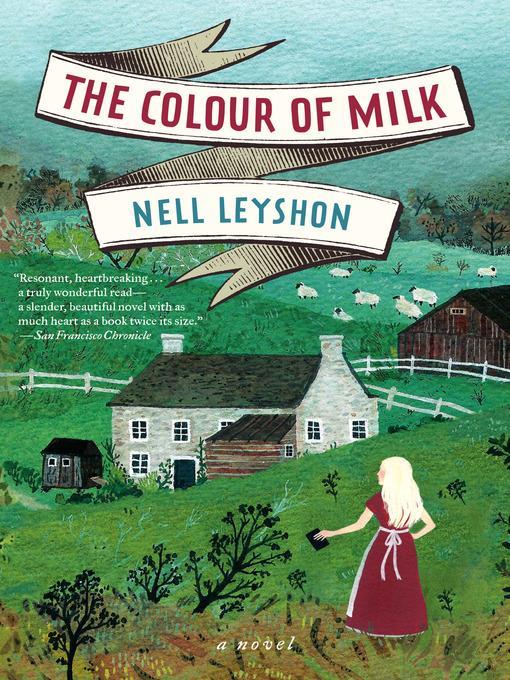
The Colour of Milk
A Novel
- اطلاعات
- نقد و بررسی
- دیدگاه کاربران
نقد و بررسی

October 15, 2012
Mary, the 15-year-old narrator of Leyshon’s new novel (after Bedlam), is a young English farm girl with more promise than prospects. The year is 1831 and her family—parents, three older sisters, and grandfather—beats down any spirit or ambition Mary might show. In spite of this, she learns to read and write, taking more pleasure and pride in her skills than in her farm work. When the vicar’s housemaid leaves, Mary’s father accepts payment to send Mary to tend to the vicar’s ailing wife, largely because Mary “ain’t exactly doing the work of a man down here.” As she tells her own story, Mary reveals herself as a pawn in the hands of the powerful. That she has chosen to set down this tale is her one daring act. The stylized language—biblical, colloquial, minimal—and restrained emotion save the story from soap opera melodrama, but also distance readers from Mary’s brief bursts of happiness—with her grandfather and the family cow—as well as from her growing distresses. We see the tragic price she pays for wanting more through the wrong end of a telescope; it is terrible, but too far off to be truly devastating.

October 15, 2012
A cameo brooch of a novel from British playwright and novelist Leyshon (Devotion, 2008, etc.), under 200 pages, set in 19th-century England and narrated in the quixotic voice (including no capital letters and odd verb emphasis, among other contrivances) of a barely literate farm girl. Fourteen-year-old Mary's entire world consists of the farm where she lives with her parents, three older sisters and beloved invalid grandfather with whom she shares a caustic sense of humor. Despite a malformed leg that causes her to limp, she toils as hard as her three older sisters under the despotic eye of her father, who despairs/resents that he has no boys to help him. One Easter sunrise, the sisters share their secret wishes: devout Beatrice to meet the Lord, Hope to live in comfort and Violet to be a teacher in a school, although she cannot read. Mary, usually never one to mince words, skips her turn. She has no wishes formed in her head, no vista she dreams of exploring. Her world may be harsh, but she has no desire to venture further. She resists when her father sends her away to work in the vicarage to help the vicar Mr. Graham's ailing wife. It doesn't matter that the gentle invalid takes an immediate fancy to Mary or that life is much easier. She misses the farm and does not see her new, more comfortable situation as an opportunity or adventure. No fool, she refuses to flirt with Ralph, the vicar's caddish adolescent son, who has already seduced Violet and pays scant attention to his adoring mother. After Ralph leaves for Oxford, Mrs. Graham weakens and dies. Mr. Graham, who has begun to teach Mary to read, asks her to continue in his employ. But the price of literacy turns out to be too high for Mary. The collision of sexual desire with the British class system leads to violent tragedy. What begins as a refreshingly unromanticized miniature of rural 19th-century Britain slips at the end into standard melodrama.
COPYRIGHT(2012) Kirkus Reviews, ALL RIGHTS RESERVED.

November 1, 2012
Her name is Mary. Her hair is the color of milk. And this is her story, told in a compelling voice as British writer Leyshon brings her narrator brilliantly to life. Mary begins her account in 1830, when she is 14 and forced to leave the only world she has known, her abusive father's farm, where she slaves from sunup to sundown alongside her three sisters. Against her will, Mary's father sends her to live as housemaid for the ailing vicar's wife so that he can collect the money. It is in her new life at the vicarage that this illiterate girl realizes her greatest dream, to learn to read and write. But the learning comes at a tragic cost. Resolved to tell the truth of what happened, Mary draws the reader in from the opening pages. Here is a headstrong, forthright, optimistic character determined to survive her wretched circumstances in a literary jewel crafted by an accomplished writer.(Reprinted with permission of Booklist, copyright 2012, American Library Association.)




دیدگاه کاربران